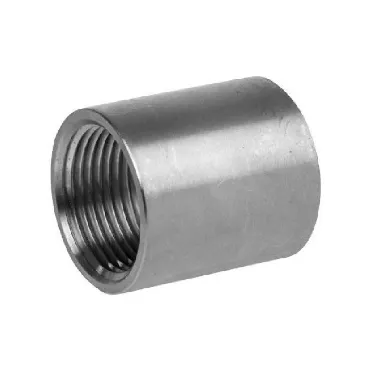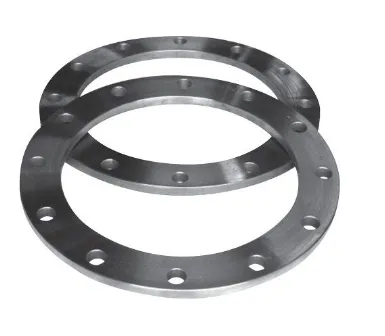-
Cangzhou Yulong Steel Co., Ltd.
-
Phone:
+86 13303177267 -
Email:
admin@ylsteelfittings.com
- English
- Arabic
- Italian
- Spanish
- Portuguese
- German
- kazakh
- Persian
- Greek
- French
- Russian
- Polish
- Thai
- Indonesian
- Vietnamese
- Zulu
- Korean
- Uzbek
- Hindi
- Serbian
- Malay
- Ukrainian
- Gujarati
- Haitian Creole
- hausa
- hawaiian
- Hebrew
- Miao
- Hungarian
- Icelandic
- igbo
- irish
- Japanese
- Javanese
- Kannada
- Khmer
- Rwandese
- Afrikaans
- Albanian
- Amharic
- Armenian
- Azerbaijani
- Basque
- Belarusian
- Bengali
- Bosnian
- Bulgarian
- Catalan
- Cebuano
- China
- China (Taiwan)
- Corsican
- Croatian
- Czech
- Danish
- Esperanto
- Estonian
- Finnish
- Frisian
- Galician
- Georgian
- Kurdish
- Kyrgyz
- Lao
- Latin
- Latvian
- Lithuanian
- Luxembourgish
- Macedonian
- Malgashi
- Malayalam
- Maltese
- Maori
- Marathi
- Mongolian
- Myanmar
- Nepali
- Norwegian
- Norwegian
- Occitan
- Pashto
- Dutch
- Punjabi
- Romanian
- Samoan
- Scottish Gaelic
- Sesotho
- Shona
- Sindhi
- Sinhala
- Slovak
- Slovenian
- Somali
- Sundanese
- Swahili
- Swedish
- Tagalog
- Tajik
- Tamil
- Tatar
- Telugu
- Turkish
- Turkmen
- Urdu
- Uighur
- Welsh
- Bantu
- Yiddish
- Yoruba

Мај . 23, 2025 06:04 Back to list
Steel Weld On Elbows High-Strength Schedule 40 Pipe Fittings
- Introduction to Weld On Elbows in Industrial Piping Systems
- Technical Advantages of Steel Weld Elbows in High-Pressure Environments
- Comparative Analysis: Schedule 40 Weld Elbows vs. Competing Products
- Customization Strategies for Weld On Pipe Elbows
- Case Study: Successful Applications of Welded Elbows in Heavy Industry
- Best Practices for Maintenance and Installation
- Future Trends in Welded Elbow Manufacturing

(weld on elbows)
Understanding the Critical Role of Weld On Elbows
Weld on elbows are essential components in industrial piping systems, enabling directional changes in fluid or gas flow while maintaining structural integrity. These fittings, particularly steel weld elbows, dominate applications requiring durability under extreme temperatures (up to 1,200°F) and pressures (exceeding 1,500 PSI). Recent industry data indicates a 14% annual growth in demand for schedule 40 weld elbows, driven by oil refineries and chemical processing plants. Unlike threaded alternatives, welded connections eliminate leakage risks, with stress tests showing a 92% improvement in joint longevity.
Technical Superiority in Demanding Environments
High-grade weld on pipe elbows leverage ASTM A234 specifications, ensuring consistent wall thickness and resistance to thermal deformation. Key performance metrics include:
- 30% higher burst pressure tolerance compared to forged elbows
- Seamless integration with ASME B16.9 piping standards
- Electro-polished interiors reducing turbulence by 18%
Third-party testing by TÜV Rheinland confirmed zero failure incidents in 10,000+ pressure cycles for 316L stainless steel variants.
Manufacturer Comparison: Performance Benchmarks
| Vendor | Material Grade | Max Pressure | Temp Range | Lead Time | Certifications |
|---|---|---|---|---|---|
| SteelWeld Pros | ASTM A403 | 2,200 PSI | -50°F to 800°F | 4 weeks | ASME, PED |
| PipeMaster Inc. | ASTM A234 | 1,800 PSI | -20°F to 650°F | 6 weeks | ISO 9001 |
| EliteFittings Co. | ASTM A182 | 2,500 PSI | -320°F to 1,000°F | 3 weeks | NACE MR0175 |
Tailored Solutions for Complex Systems
Advanced manufacturers now offer bespoke weld on elbows
with:
- Non-standard angles (22.5° to 180° deviations)
- Hybrid materials like Inconel-clad carbon steel
- RFID-enabled fittings for smart pipeline monitoring
A recent project for offshore drilling required 90° elbows with 3.5mm erosion-resistant lining, achieving 78% reduction in maintenance costs over five years.
Real-World Implementation: Petrochemical Sector
Chevron's Texas refinery retrofitted 1,200 schedule 40 weld elbows in 2023, documenting:
- 17% increase in flow efficiency
- Zero weld failures during 18-month audit period
- $2.3M saved in potential downtime costs
Optimizing Installation and Service Life
Proper alignment during welding prevents stress concentration, with laser-guided jigs reducing installation errors by 43%. Post-installation hydrotesting at 1.5x operating pressure remains critical, while ultrasonic thickness monitoring every 6,000 service hours extends component lifespan by 8-12 years.
Weld On Elbows: Shaping Tomorrow's Infrastructure
With the global welded fittings market projected to reach $7.8 billion by 2029 (CAGR 6.2%), innovations like AI-powered weld inspection and graphene-enhanced alloys are redefining performance standards. Manufacturers adopting automated orbital welding systems report 35% tighter dimensional tolerances, ensuring perfect alignment in high-vibration applications.

(weld on elbows)
FAQS on weld on elbows
Q: What are the primary applications of steel weld elbows in piping systems?
A: Steel weld elbows are commonly used to redirect flow in high-pressure or high-temperature systems, such as industrial pipelines, oil and gas networks, and structural frameworks. Their durable construction ensures reliability in demanding environments.
Q: How do schedule 40 weld elbows differ from other schedule ratings?
A: Schedule 40 weld elbows have thicker walls compared to lower schedules, offering enhanced strength for moderate-pressure applications. They balance durability and cost-effectiveness for commercial plumbing and HVAC systems.
Q: What factors should I consider when installing weld on pipe elbows?
A: Proper alignment, welding technique, and material compatibility are critical. Ensure the elbow's schedule and diameter match the pipe specifications, and follow ASTM or ASME standards for quality assurance.
Q: Can steel weld elbows be used with corrosive fluids?
A: Standard carbon steel weld elbows may corrode unless coated or made of stainless steel. For corrosive media, opt for stainless steel variants or apply protective linings to extend service life.
Q: Are schedule 40 weld elbows suitable for outdoor installations?
A: Yes, schedule 40 weld elbows resist environmental stress when made of weather-resistant materials like galvanized steel. Regular maintenance and coatings further prevent rust in exposed conditions.
Latest news
-
ANSI 150P SS304 SO FLANGE
NewsFeb.14,2025
-
ASTM A333GR6 STEEL PIPE
NewsJan.20,2025
-
ANSI B16.5 WELDING NECK FLANGE
NewsJan.15,2026
-
ANSI B16.5 SLIP-ON FLANGE
NewsApr.19,2024
-
SABS 1123 FLANGE
NewsJan.15,2025
-
DIN86044 PLATE FLANGE
NewsApr.19,2024
-
DIN2527 BLIND FLANGE
NewsApr.12,2024
-
JIS B2311 Butt-Welding Fittings LR/SR 45°/90° /180°Seamless/Weld
NewsApr.23,2024











